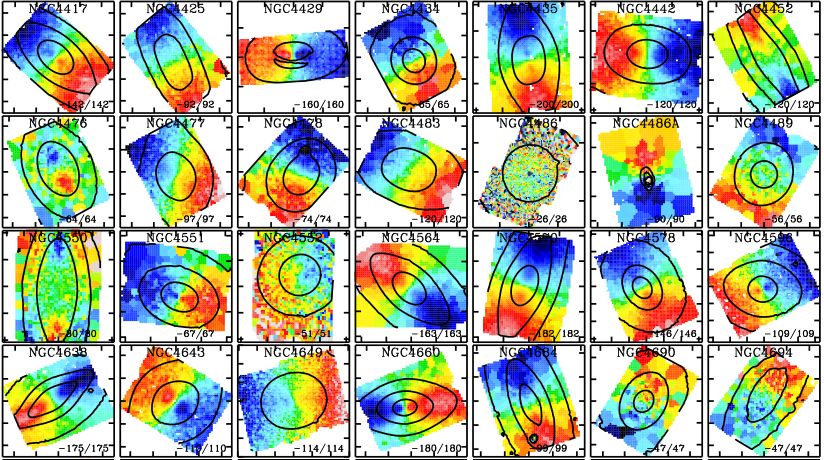Daily Image
06-11-2012Todays Colloquium: The Atlas3D project: observing galaxies in 3D
| Submitter: | Michele Cappellari (Oxford) |
| Description: | The Atlas3D Project http://www-astro.physics.ox.ac.uk/atlas3d/) combines a multi-wavelength survey of a complete sample of 260 early-type galaxies within the local volume with numerical simulations and semi-analytic modeling of galaxy formation. This project aims to quantify the global stellar and gas kinematics, the gas content and population of a statistically significant sample of objects to characterize the class of early-type galaxies, and relate this to their formation and evolution. The observational part of the project consists of optical integral-field spectroscopy using the SAURON integral-field unit on the William Herschel Telescope (WHT), radio observations with the Westerbork Radio Synthesis Telescope (WRST), millimeter observations with the IRAM 30m telescope and the Combined Array for Research in Millimeter-wave Astronomy (CARMA), together with deep imaging with MegaCam on the Canada-France-Hawaii Telescope (CFHT). State-of-the-art numerical simulations are used for the interpretation of this unique set of data, assessing signatures in the dynamics and stellar populations of the formation and evolution processes of early-type galaxies. The Figure (from Krajnovic et al. http://adsabs.harvard.edu/abs/2011MNRAS.414.2923K) shows examples of the stellar velocity fileds obtained with SAURON. Red and blue colours indicate the mean velocity of the stars being away or towards the observer respectively. Two types of kinematic morphologies are evident: (i) fast rotating disks, with the velocity aligned with the galaxy isophotes (overlaid in black) and (ii) virtually non-rotating galaxies, where the maps appear dominated by noise. The survey found that the first type, the disk-like systems dominate in the nearby Universe, even in the population of passive galaxies. |
| Copyright: | D. Krajnovic et al. 2011 (MNRAS) |
| Tweet |  |
